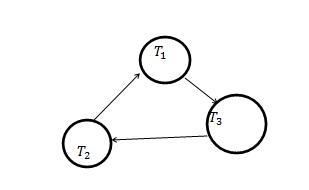

As a result, all activity comes to a halt and will remain so indefinitely unless the DBMS recognizes the deadlock and aborts one of the transactions. The main issue has now arise, Transaction T1 will wait for transaction T2 to release the lock, and transaction T2 will similarly wait for transaction T1.
#DEADLOCK HANDLING IN DBMS WITH EXAMPLE UPDATE#
Simultaneously, Transaction T2 has locks on the Salary table rows (which T1 needs to update) but needs to update the Employees table rows held by Transaction T1. Let us use an example to better grasp the notion of Deadlock:Īssume T1 has a lock on some rows in the Employees database and needs to change some rows in the Salary table.

Deadlocks can occur in multi-user, multi-tasking environments, where multiple processes are accessing shared resources simultaneously and can cause decreased system performance or system failure if not resolved. This creates a circular wait, where each process is waiting for a resource that is held by another process, leading to a complete blockage of the system. What is Deadlock in DBMSĪ deadlock in a database management system (DBMS) is a situation where two or more processes are blocked, waiting for each other to release a resource that they need to proceed with their execution. Also, we will learn about the concept of Phantom Deadlock in DBMS. We will also learn the technique of Deadlock Prevention along with wait die and wound wait schemes in detail. After that, we will learn the process of Deadlock Avoidance in DBMS and Deadlock Detection in DBMS. Then we will look at the necessary conditions for a Deadlock to occur.

In this article, we will learn about what is Deadlock in DBMS with the help of examples.


 0 kommentar(er)
0 kommentar(er)
